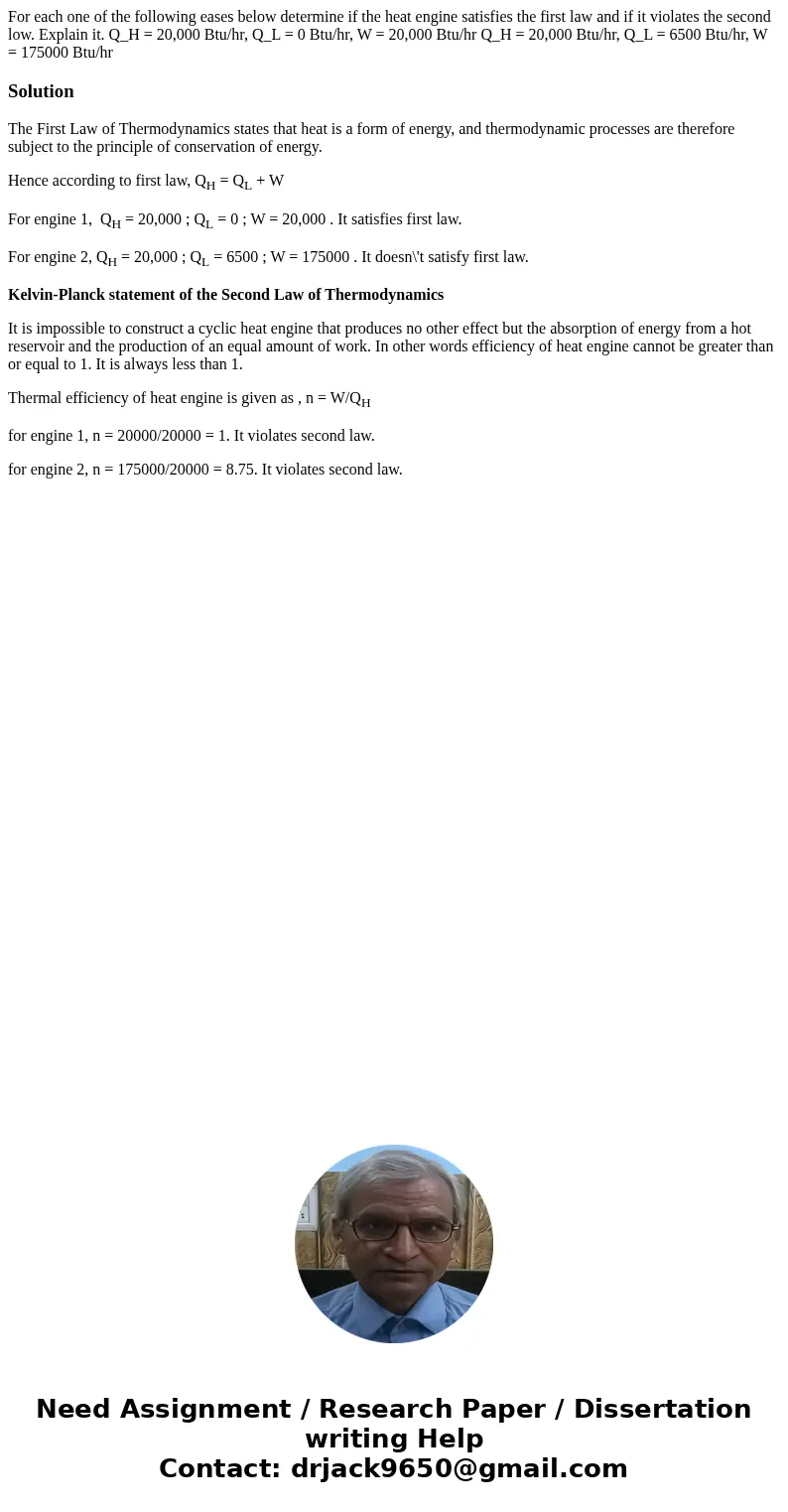For each one of the following eases below determine if the h
Solution
The First Law of Thermodynamics states that heat is a form of energy, and thermodynamic processes are therefore subject to the principle of conservation of energy.
Hence according to first law, QH = QL + W
For engine 1, QH = 20,000 ; QL = 0 ; W = 20,000 . It satisfies first law.
For engine 2, QH = 20,000 ; QL = 6500 ; W = 175000 . It doesn\'t satisfy first law.
Kelvin-Planck statement of the Second Law of Thermodynamics
It is impossible to construct a cyclic heat engine that produces no other effect but the absorption of energy from a hot reservoir and the production of an equal amount of work. In other words efficiency of heat engine cannot be greater than or equal to 1. It is always less than 1.
Thermal efficiency of heat engine is given as , n = W/QH
for engine 1, n = 20000/20000 = 1. It violates second law.
for engine 2, n = 175000/20000 = 8.75. It violates second law.

 Homework Sourse
Homework Sourse